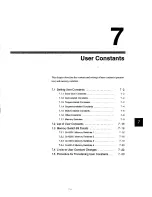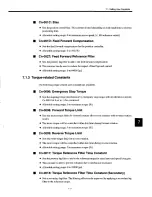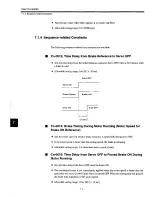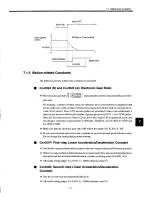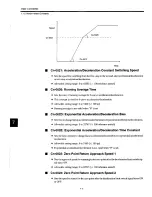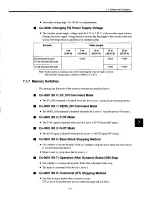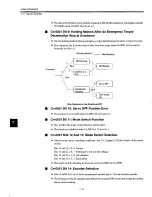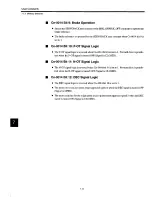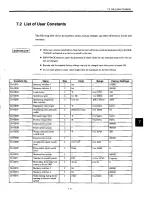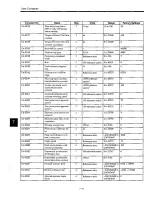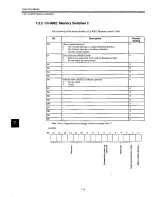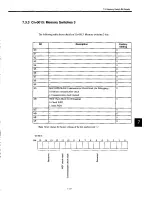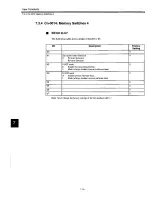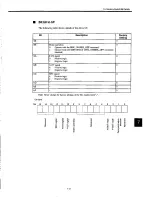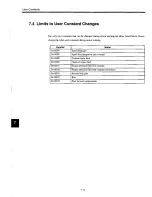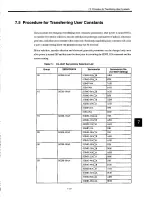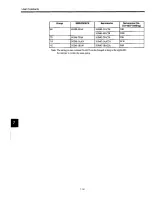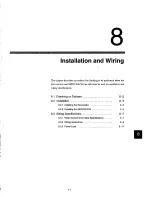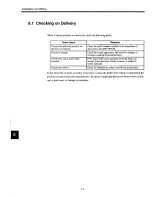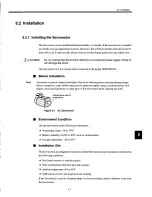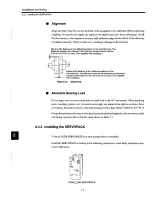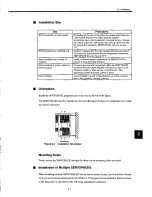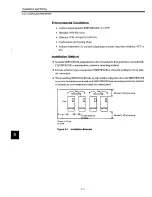
7.2 List of User Constants
Constant No.
Name
Size
Units
Range
Factory Settings
Cn-0035
Speed loop compensation
constant
2
—
0 to 100
0
Cn-0036
Reserved for system
2
—
—
0000H
Cn-0037
Servomotor selection
2
—
0 to 255
Capacity
Cn-0038
Changing
PG power
sup-
ply voltage
2
0.1 mV
52000 to 58000
52500
Cn-0039
Reserved for system
2
—
—
0000H
Cn-003A
Reserved for system
2
—
—
0000H
Cn-003B
Reserved for system
2
—
—
0000H
Cn-003C
Reserved
for
system
2
—
—
0000H
Cn-003D
Reserved for system
2
—
—
0000H
Cn-003E
Reserved for system
2
—
—
0000H
Cn-003F
Reserved for system
2
—
—
0000H
Note 1. Non-volatile parameters are saved on EEPROM and cannot be changed very often. It usually takes about
60 ms to overwrite by 2-byte parameter, and about 120 ms to overwrite by 4-byte parameter, but response
of a command will vary somewhat depending on the status of the buffer,
2. The factory setting for load inertia is an equivalent inertia of the Servomotor. Since vibrations will occur
using the factory setting with. a small load inertia, always set the load inertia to around 0 prior to operation.
3. Be sure to use an electronic gear ratio (Cn-0024 and 0025) within a range where 0.01
g B(Cn-0024)/A(Cn-0025) *g 100.
4.
To avoid possible danger, never change parameters such as motor selection, encoder selection and number
of encoder pulses while the Servomotor is running (main circuit ON).
5. Changing parameters like the electronic gear ratio and number of encoder pulses may cause the Servomotor
to run at a maximum speed outside the specified Servomotor speed range and may generate an alarm code
04 when power is turned ON. If this happens, check the reference units one more time.
6. Be sure to convert all data to hexadecimal before writing it. Convert b15 (MSB) to b0 (LSB) to hexadecimal
in 4-bit groups (b15 to b12, b l l to b8, b7 to
b4, b3 to
b0) for memory switches 1 to 4.
Data sent from SERVOPACKS is read in hexadecimal, and note that = E H
in
the table is a
hexadecimal
number. The values specified in Cn-0028, 002B and 002F to 0033 have a sign and are 32-bit twos comple-
ments when a minus (—) sign is added.
7 -15

